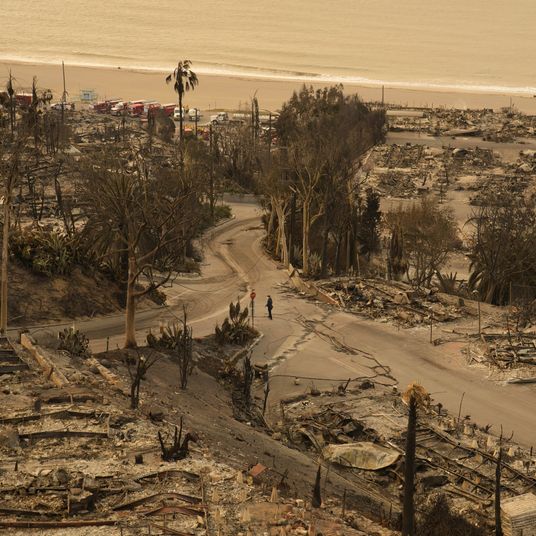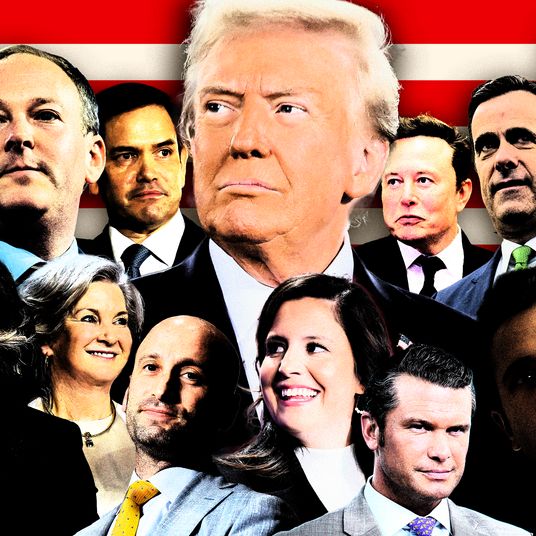
Freddie MacPhoto: Getty Images
Are you behind on the whole Fannie Mae–Freddie Mac affair? Maybe you were out of the office last Friday and haven’t had a chance to catch up. Or perhaps you did try to catch up, but an ocean of words and opinions fell upon you, and subsequently that desire to learn was suffocated. Or perhaps you don’t pay attention to these things at all, but know that something happened with the country’s biggest mortgage lenders and are idly curious as to what it was. Or maybe you are merely wondering: Who are those farm children, and why are they in trouble? In any case, we understand. Which is why we’ve compiled a short, incomplete but pretty much readable cheat sheet for your perusing pleasure after the jump. A “For Idiots, by Idiots” guide, if you will.
What Are Fannie Mae and Freddie Mac?: The Federal National Mortgage Association, a.k.a. Fannie Mae (FNMA, say it fast) was formed as part of Roosevelt’s New Deal in 1938, in order to make money available to people for the purchase of homes; in 1968, it became a shareholder-owned corporation. It and its spinoff/sibling Freddie Mac (the Federal Home Loan Mortgage Corporation — FRE) borrow money in the form of mortgage loans from banks, repackage them as securities, and sell them to investors. Simultaneously, they borrow money from the debt markets and use it to buy mortgages for their own investments. Also, they are kind of corrupt and mismanaged, and that has caused some problems in the past. But for now know this: Between the two of them, they guarantee about $5 trillion in loans, half of the nation’s $12 trillion mortgage market.
What Happened?: Like other lenders, Fannie and Freddie have been suffering because a lot of people who maybe shouldn’t have been approved for home loans were, and now they are not paying back said loans. FM&FM have a bunch of outstanding guaranteed mortgages, and more and more delinquencies are rolling in every day. But they’ve guaranteed the loans and have to pay back their investors! Awkward. Like when Nate lost $5,000 to the Russians and did not have the money in his trust fund, it’s a sticky wicket, only on a much, much larger scale. Also, it’s been steadily getting stickier. Investors have been losing confidence in the companies’ ability to operate as usual and are pulling out their money by dumping their shares. Also losing confidence in Fannie Mae and Freddie Mac are the banks: They’ve not been crazy about the idea of lending to them, because they are afraid of not getting paid back. And so Fannie and Freddie were kind of chugging along, with very little liquidity in their engines, when last Friday, a New York Times story came out about how the Bush administration was working on plan to have the government take over one or both of the companies if things worsened. “The officials involved in the discussions stressed that no action by the administration was imminent, and that Fannie and Freddie are not considered to be in a crisis situation.” And then things worsened: Fannie Mae and Freddie Mac’s stock dropped by 50 percent. The stock market slid after it. Crisis situation!
Something About the Government Helping? Everyone always has figured that, if Fannie Mae and Freddie Mac were in deep distress, the government would step in and help them: Not only because the government created the companies but because they’re so big, their failure would basically cause the U.S. housing market to freeze: If Fannie and Freddie stop buying loans, banks might stop making new loans. Mortgages would be like chocolate in the Soviet Union, or cigarettes in prison. (We think?) Anyway: They’d be way harder to get and prohibitively expensive. But we found out: Things moved quickly after the stock drop Friday, and late last night/early this morning the government announced a plan in which the Treasury would buy shares in Fannie Mae and Freddie Mac, and the Federal Reserve would expand their access to the Federal Reserve’s credit line. Currently capped at $2.25 billion each, they could soon have access, some officials have said, to $300 billion combined. This rankled tax payers, whose money it was, after all.
“I don’t know where these guys get the audacity to take our money, taxpayer money, and buy stock in Fannie Mae,” ex–George Soros partner Jim Rogers, 65, told Bloomberg News. “So we’re going to bail out everybody else in the world. And it ruins the Federal Reserve’s balance sheet and it makes the dollar more vulnerable and it increases inflation…”
But it made the market happy — at least at first. This morning, the Dow went up, and so did Fannie and Freddie shares. But then everyone in America remembered that thing we all learned in college, which is that having a credit line is only cool in the short term and in the end those leather pants will end up costing you far more than what it actually said on the price tag. Er. Anyway. Shares went back down again.
“The market opened with a sigh of relief,” Arthur Hogan, an analyst at Jefferies & Company, told the Times. “But upon reflection, we realized that the government’s plan doesn’t quell our concerns about the economy.”
Also, many people are saying things that end with lines like “worse recession than World War II” and “worse than the Great Depression.” And that’s kind of where we are right now. Are we going to have to learn to sew?
Lots More Here: Treasury and Fed Pledge Aid For Ailing Mortgage Giants [WSJ]
Stocks Fall Back After Early Gain On Rescue Plans [NYT]
About Fannie And Freddie [NYT]
Parsing Paulson [Market Movers/Portfolio]
Fannie Plan a `Disaster’ to Rogers; Goldman Says Sell [Bloomberg]





























